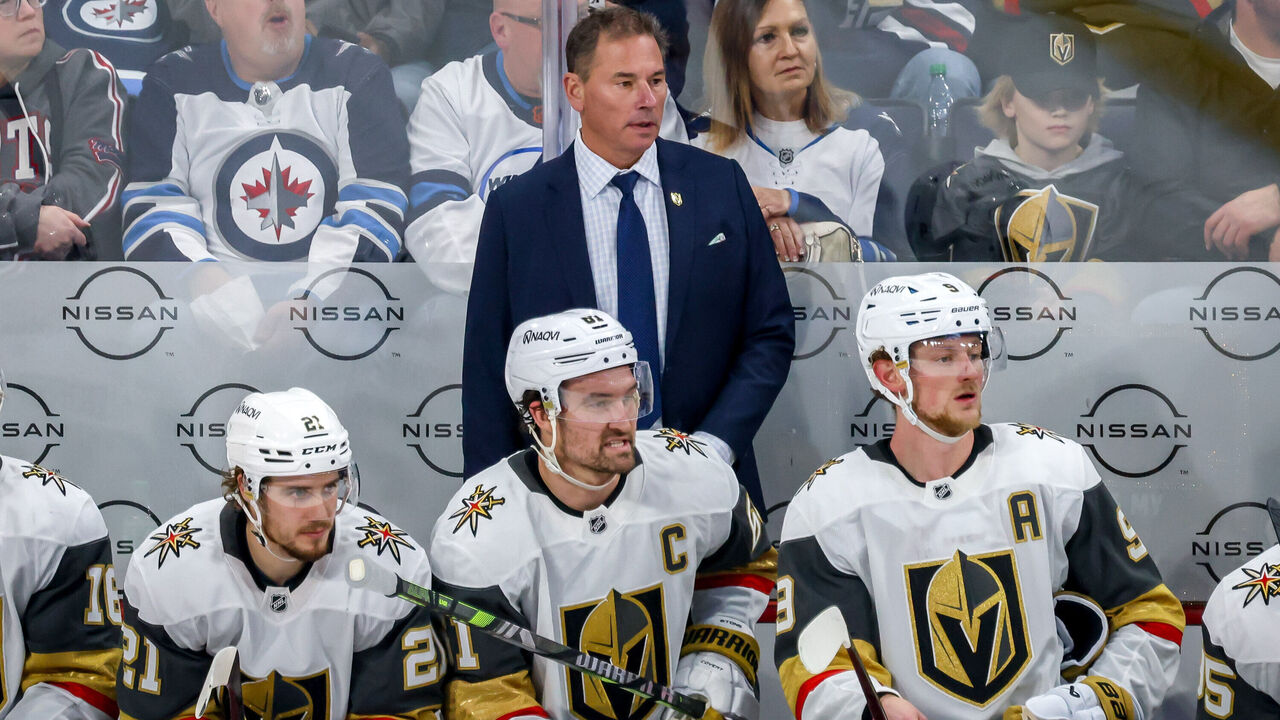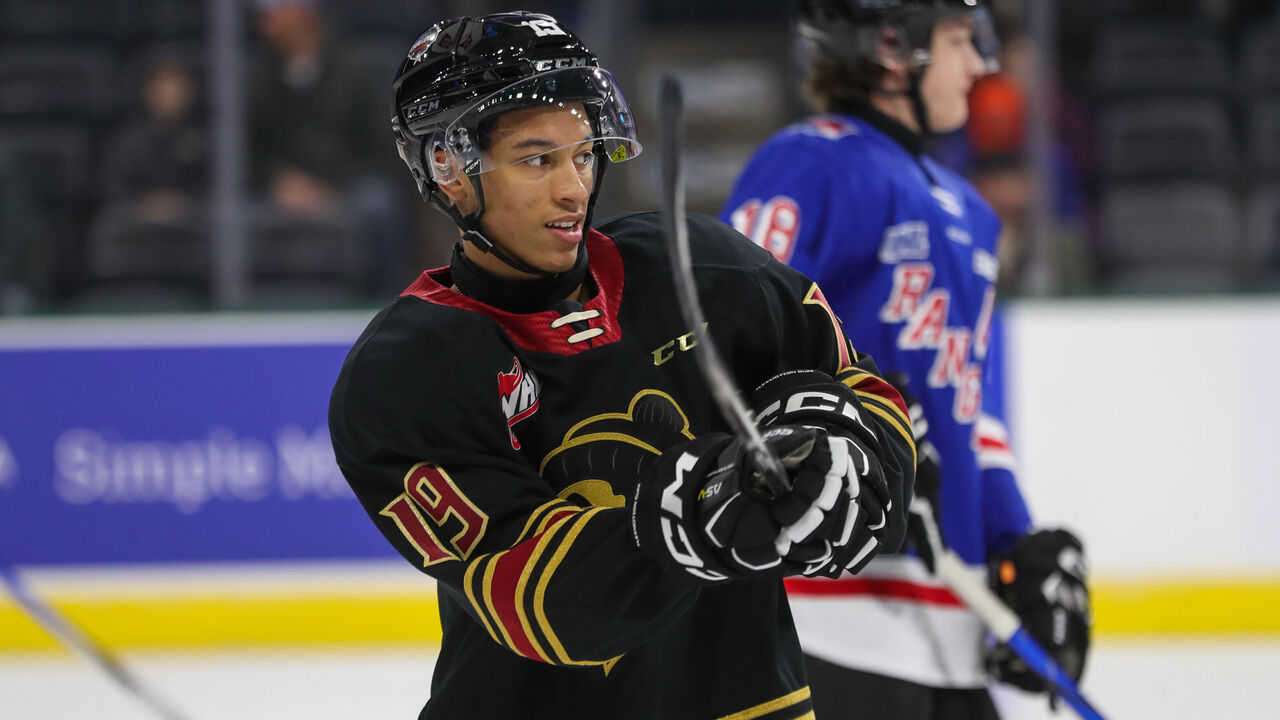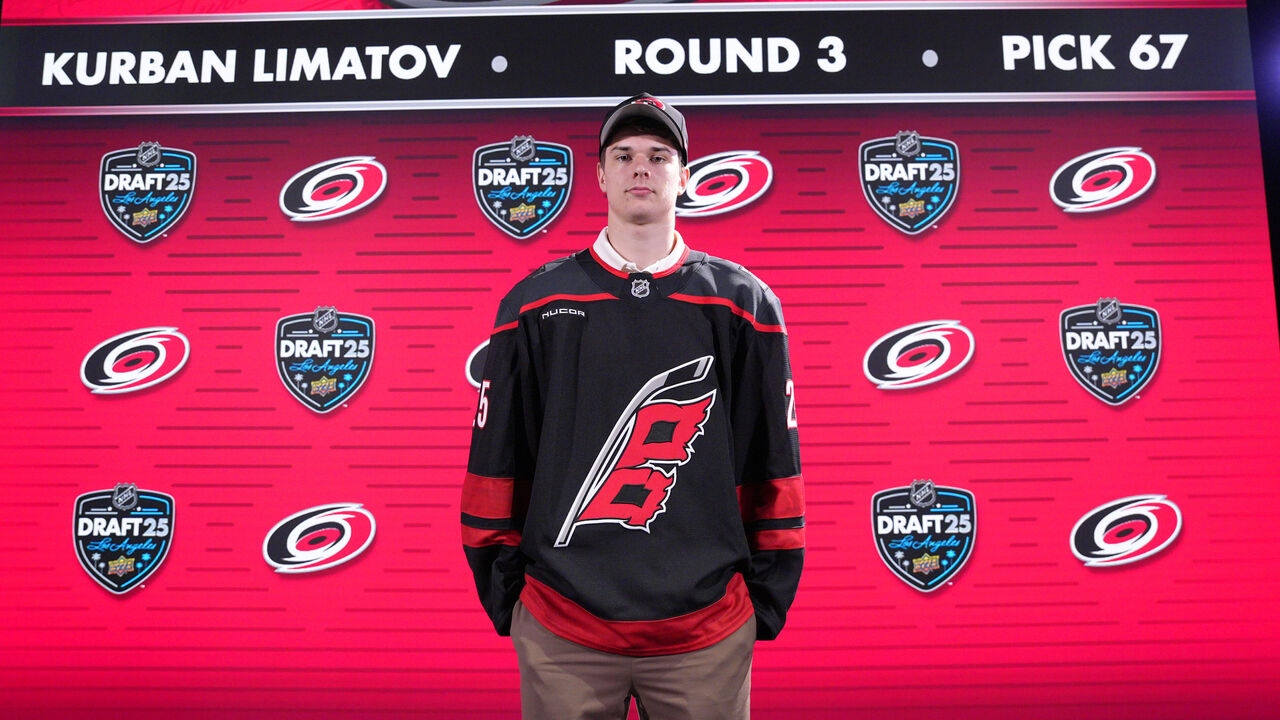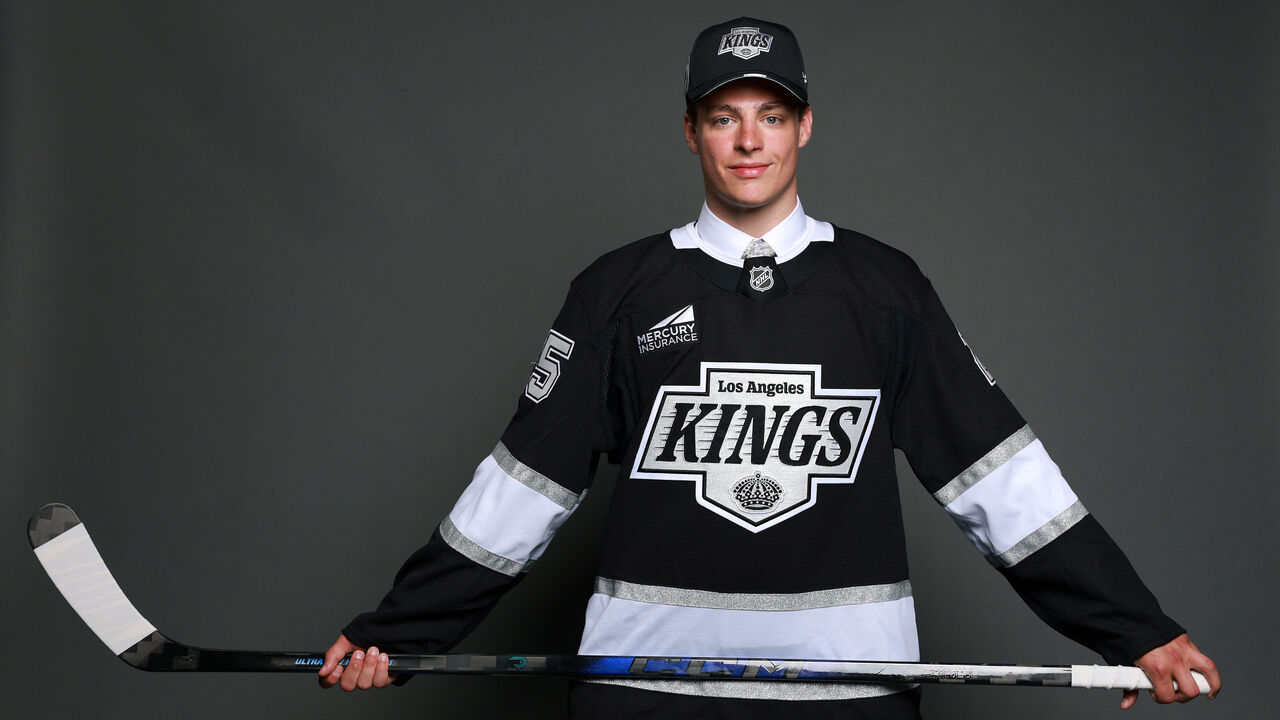Teams to watch on July 1, draft trends, and other NHL offseason items
The NHL salary cap will increase to $95.5 million in 2025-26, marking the biggest year-to-year jump ($7.5 million) since the cap arrived two decades ago.
This means most clubs have ample cap space to make a splash when free agency officially opens at 12 p.m. ET Tuesday. One issue: a lot of the high-profile pending unrestricted free agents - most notably Sam Bennett, John Tavares, and Matt Duchene - recently re-signed with their current teams.
"Anybody can go and look at the list of potential (impact) free agents and see there aren't that many," Red Wings general manager Steve Yzerman told reporters Saturday.
Nevertheless, with seemingly every franchise in the league but the Penguins looking to improve and names like Mitch Marner, Brad Marchand, and Aaron Ekblad still available, there will be drama. Here are three teams to watch:

Golden Knights: Vegas and Toronto are reportedly discussing a sign-and-trade deal that could send pending UFA and superstar winger Marner to Sin City. The Golden Knights have only $5.6 million in cap space next season, according to PuckPedia, so GM Kelly McCrimmon has to jump through some financial hoops. Defenseman Alex Pietrangelo may end up on long-term injured reserve, while defenseman Nic Hague and center Nick Roy are among several players potentially on the move. If Vegas strikes out with Marner, don't be surprised if it pivots to Marchand or fellow winger Nikolaj Ehlers. Coach Bruce Cassidy desperately needs an offensive catalyst (or two) on the wings.
Hurricanes: Carolina has made the playoffs in each of Rod Brind'Amour's seven years behind the bench, yet has never advanced to the Stanley Cup Final. The club acquired a game-breaking forward midseason in back-to-back years, but both Jake Guentzel and Mikko Rantanen were gone before the next campaign. GM Eric Tulsky is armed with $26.7 million in cap space - a luxury for a Cup contender. While Marner is the only pending UFA of the superstar variety, Ehlers would be an OK consolation prize. Mikael Granlund could make sense at second-line center. The Canes are the type of team that won't hesitate to offer a restricted free agent an offer sheet (Marco Rossi? Mason McTavish?) or pull off a massive trade. They're a highly motivated group.
Ducks: GM Pat Verbeek has stated publicly that he wants to be aggressive in an attempt to make the 2026 playoffs. He's reshaped a chunk of the roster over the past seven months, swapping out Trevor Zegras, John Gibson, Cam Fowler, and Brian Dumoulin for Chris Kreider, Jacob Trouba, and Ryan Poehling. Marner (if still available), Ehlers, and sniping winger Brock Boeser are obvious targets to upgrade what remains a below-average forward group. Ekblad would be an interesting addition to the right side of a blue line that already has Trouba and Radko Gudas. Anaheim has a whopping $36 million in cap space but must be careful with a bunch of key extensions on the horizon.
Goalie trade market heating up?

Yzerman finally put an end to Gibson's years-long residency in the rumor mill Saturday, acquiring the American goalie from the Ducks in exchange for veteran backup Petr Mrazek and two draft picks.
"We think John has a lot of good hockey in him," Yzerman said of a 31-year-old who peaked in his 20s and earns $6.4 million a year through 2026-27.
Also on Saturday, the Blues avoided a potential offer sheet by inking promising youngster and pending RFA Joel Hofer to a two-year deal.
Edmonton, Philadelphia, Carolina, Utah, and San Jose are among the teams that need (or surely could use) an upgrade at either starter or backup. Yet the big UFA prize is ... 34-year-old Jake Allen. Other intriguing but ultimately middling options include Anton Forsberg, Alex Lyon, and Dan Vladar (if he doesn't re-sign with Calgary). The second tier of UFAs - James Reimer, Alexandar Georgiev, Vitek Vanecek, Ilya Samsonov, etc. - offers little hope.

Perhaps the Gibson deal is a wink toward further trade activity. Vancouver's Thatcher Demko and Arturs Silovs, the Islanders' Semyon Varlamov, Columbus' Elvis Merzlikins, Pittsburgh's Alex Nedeljkovic, and Chicago's Arvid Soderblom all leap off the page as trade candidates this summer.
Demko, who's proven himself to be a top-10 NHL goalie when healthy, is the most desirable. The Canucks re-upped Kevin Lankinen through 2029-30 in February and have the developing Silovs under contract for another year. One of Vancouver's three goalies is surely on the move at some point this offseason, and Demko would yield by far the biggest return. The American has a season and $5 million left on a deal that leads him to 2026 free agency.
Varlamov is old but reliable, boasting a .916 save percentage in 621 career games. The 37-year-old is stuck behind star Ilya Sorokin on the depth chart of a team in transition on Long Island. His $2.75 million cap hit through 2026-27 is palatable, although he has some power with a 16-team no-trade list.
5 team-related draft trends
Blackhawks: Chicago left Day 1 with Anton Frondell, Vaclav Nestrasil, and Mason West - three large forwards with high upside. The Blackhawks doubled down on size in Rounds 2-7, with all five picks listed at 6-foot-2 or taller. The club asked prospects at the scouting combine to name the toughest draft-eligible player in their respective league. WHLers said defenseman Ashton Cumby, so the Hawks spent the 162nd pick on the soon-to-be 20-year-old fighter.
"We felt the need to get a little bit harder, tougher, to protect some of our skilled guys," director of amateur scouting Mike Doneghey told reporters.

Stars: Dallas didn't make a selection until the third-last pick of the third round. The Stars used No. 94 on 5-foot-8, 160-pound goal-scoring winger Cameron Schmidt. It wasn't a reach (some scouts view the fast, highly skilled Schmidt as a first-round talent), but it certainly creates a tidy narrative about Stars GM Jim Nill and his belief in a specific type of player. Nill selected 5-foot-8, 170-pound goal-scoring winger Logan Stankoven 47th overall in 2021. Stankoven is, of course, now a member of the Hurricanes thanks to the Rantanen trade.
Kings: Four of Los Angeles' nine picks were in their second year of eligibility - Kristian Epperson (88th overall), Caeden Herrington (120th), Petteri Rimpinen (152nd), and Brendan McMorrow (196th). The Kings have a history of drafting late bloomers, most notably selecting future NHLers Tanner Pearson and Wayne Simmonds as re-entries. Older prospects are often closer to the finished product, which, depending on the player, can be seen as a positive.

Hurricanes: As I mentioned in my Day 2 cheat sheet, Carolina can be counted on to do three things at the draft: trade down, pick undersized, skilled forwards, and select multiple Russians. The Hurricanes didn't disappoint over the weekend, trading out of the first round Friday and then making two more pick-swap deals Saturday. They selected tiny Swedish forward Viggo Nordlund in the sixth round and used four of their seven picks on Russian players. Third-rounder Kurban Limatov - a 6-foot-4 blue-liner from Moscow - could be one of the steals of the draft. Pundits had him pegged as an early second-round talent.
"If other teams are afraid to draft a player from a certain country, that's really out of our control," assistant GM Darren Yorke told theScore after last year's draft, which included six Russian picks. "It's very simple: We're just trying to get the best hockey players as we can, irrespective of where they're born."
Penguins: Kyle Dubas' obsession with current and former Soo Greyhounds players continues. The Sault Ste. Marie, Ontario, native and ex-GM of the storied OHL franchise picked Soo forwards Travis Hayes and Jordan Charron at Nos. 105 and 154. Michael Bunting, Conor Timmins, Jared McCann, Jack Campbell, Rasmus Sandin, Nick Ritchie, Matt Murray, and Joe Thornton are among the many Greyhounds players who've played for or been drafted to Dubas' teams in Toronto and Pittsburgh. Dubas has also hired plenty of staff with Soo connections, including former Maple Leafs coach Sheldon Keefe.
7 league-related draft notes

Friday's first round was unique, with almost two-thirds of the selections made by just eight teams. Chicago, Nashville, Pittsburgh, and the Islanders each made three picks, while Columbus, Calgary, Philadelphia, and San Jose had two apiece.
The class featured a disproportionate number of massive humans. Fifteen draftees, including 11 skaters, are listed at 6-foot-6 or taller. There was a run on huge defensemen to start Round 2, with Simon Wang (6-6), Jacob Rombach (6-7), Blake Fiddler (6-5), Carter Amico (6-6), and Peyton Kettles (6-6) all going within the first seven picks.
It was a rough year for Finland - only nine Finnish-born draftees, with the lone first-rounder (Sascha Boumedienne) actually playing for Sweden internationally.
The WHL showed extremely well, finishing second to the OHL in draftees produced (38-33). Both Canadian junior leagues had nine first-round players.
The U.S. National Team Development Program had a down year. No active NTDP players were selected in Round 1 for the first time since 2008. That said, first-rounders James Hagens, Logan Hensler, William Horcoff, and Cullen Potter all spent time at the NTDP before moving on to the NCAA.

Meanwhile, with the Kings picking Henry Brzustewicz at No. 31, the OHL's London Knights again had a presence in the first round. The perennial NHL talent factory has produced at least one first-rounder in nine of the past 11 drafts.
Lastly, a big-picture take on the 2025 class from Mark Dennehy. The Devils' chief amateur scout called it "a bit of a crazy draft" with the high number of pick swaps and so little consensus on late-round players. He pointed out how the draftees were 12 or 13 years old when the pandemic hit in 2020, causing them to lose valuable development time during a crucial age due to league shutdowns.
"They could skate, they could shoot pucks, they could stickhandle (on their own), but there was a time when nobody was playing (games) because we couldn't," Dennehy said. "How much effect that's had on this group, I don't know. But I'm sure there are (late-round) players who will pop because their development has been somewhat stunted by that lack of competition."
John Matisz is theScore's senior NHL writer. Follow John on Twitter (@MatiszJohn) or contact him via email ([email protected]).